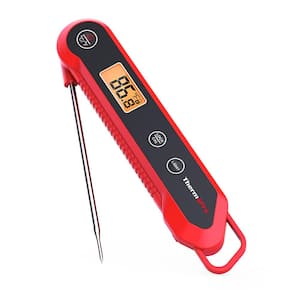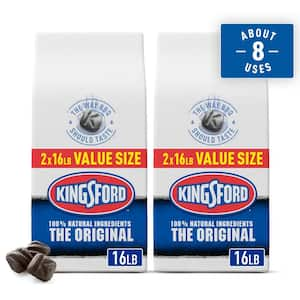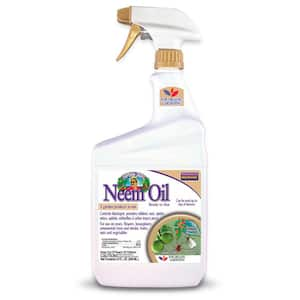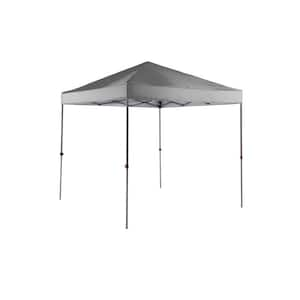Do you have what you need to make your garden grow?


Garden Center
Store Hours
Mon-Sat:
6:00am - 9:00pm
Sun:
7:00am - 8:00pm
Location
Popular at Your Garden Center
Summer Garden Center Supplies
Popular Garden Center Live Plants
Garden Project Calculators
;Resize=(703,395.44))
Grass Seed Calculator
When you're ready to seed your lawn, our calculator helps you estimate the amount of grass seed you'll need to get the job done.
;Resize=(703,395.44))
Mulch Calculator
Enter your preferred material, the square footage and mulch depth of the coverage space for accurate results.
;Resize=(703,395.44))
Fencing Calculator
We'll calculate the amount of fencing you should purchase based on your property needs.
Shop Outdoor and Garden Brands
Frequently Asked Questions About Your Store
How do I get rid of weeds?
Weeds might start peeking through in the garden beds, even if you put down a landscape liner fabric or mulch to keep them at bay. Be sure to get them before the weeds' flowers dry out and drop their seeds. Pull weeds from the root in vegetable gardens, and dig up the roots if the weed snapped off without them. If you choose to treat weeds with weed killer, find one that's safe for pollinators and pets — and wear durable rubber gloves and a respirator to ensure that it doesn't touch your skin or lungs.
Is it possible to fix burnt grass?
The solution for how to get burnt grass green again is easy: Fix the scorched spot with a good long drink. Continue to water it regularly. It should perk up over the course of a week. The method for how to treat grass from dog urine isn't as simple. Grass damaged by pets must be removed, neutralized, and replaced in fresh soil with new sod, grass seed, or patch and repair grass seed.
Is there an ideal time to water my garden?
If you can water during the early morning or in the evening, that's ideal. Watering when it's hottest outside means a great deal of the moisture will evaporate. This applies to whatever you're growing: plants, veggies, trees, and grass. Whenever you water, give all the plants a thorough drink, and don't skip it when it's not the best time. The plants still need hydration, regardless of the time on the clock. Depending on your grass type, climate, and lawn health, you may also want to add a lawn fertilizer.
Should I fertilize my flower garden?
Once you've got your plants in the ground, make sure they stay well-fed and hydrated. Choose a synthetic or an organic fertilizer to give your garden a boost. You can even find one that's formulated for your plants, whether you need a flower fertilizer, vegetable fertilizer, citrus tree fertilizer, or general garden fertilizer blend. Follow the application instructions and don't add extra. Always water immediately after, as directed, so your plants don't get fertilizer burn.
How can I keep cool this summer?
When you need a break from the heat, shelter under a patio umbrella or covered gazebo. If you have sturdy structures like a house or shed, make your own shade by attaching awnings and shade sails. But sometimes shade isn't enough because it's just too humid out. That's when a patio mister or misting fan can help cool the air and turn an uncomfortable afternoon into a refreshingly relaxing day. Go back to lounging in the sun when that water-chilled air is ready.
What do you carry for backyard entertaining?
Backyard entertaining doesn't have to be a barbeque party. Some focus on the grill or fire pit, while others concentrate on yard games. Many people relax outdoors and chat with friends. Whichever path you take for bonding with friends, extend the fun into the evening with proper outdoor lighting and a bug-free yard without pesky mosquitos.
Garden Project Ideas

Protect wood from carpenter bees with our guide on sealing surfaces, using traps, and applying safe pest control methods.

Check out our tips on banishing gnats indoors and out using traps, sprays, and moisture control to keep your home pest-free.

Safely remove poison ivy with our guide on protective gear, cutting techniques, and herbicide use for effective eradication.

Maintain a healthy lawn using organic methods like manual weeding, natural herbicides, and proper lawn care practices.

Grow apples successfully with our guide on choosing varieties, planting, pruning, and pest control for a bountiful harvest.

Cultivate thriving grapes with our step-by-step tips on site selection, trellising, pruning, and disease prevention.
The Home Depot Garden Center at Florin Rd
Shop the Garden Center 4th of July Sale
Greet the 4th of July with the yard of your dreams. Our big 4th of July Sale can help you do it. We carry outdoor power equipment, including string trimmers, lawn mowers, and hedge trimmers, to get your grass and trees in shape. Fresh fertilizer and another round of mulch might be just what the doctor ordered to perk up your garden. Continue watering regularly to enjoy a summer garden that beats the heat.
Settle Into Summer
As we continue deeper into summer, your landscaping and garden will weather more sun than earlier in the season. That means you'll need to consider how to keep things cool with proper tending, shade, and irrigation. You might also need ways to beat the heat. Let us help. At The Home Depot Florin Rd Garden Center, we've got what you need to make the most of summer.
Keep Your Lawn Tidy
As the weeks tick by, the grass seed or sod you planted will grow taller than what's ideal. You'll need to maintain it so it'll look manicured and fresh again. Keep the lawn in check with a self-propelled lawn mower and a string trimmer to knock down any tall grass around sidewalks, fences, or buildings.
Bushes, shrubs, and trees climb toward the sun and lose their shape over time. In the summer, they'll be growing fast, filled with buds and blooms before you know it. Trim wild branches to the shape you want with garden shears and hedge trimmers. It's best to leave major tree maintenance and tree topping to the pros, but you may want to use a pole saw for minor trims and a chainsaw for small branches on trees and bushes.
Care for Your Trees and Shrubs
When you're making sure your garden is watered, don't forget about the shrubs and trees. They may need less watering than delicate flowers or vegetable plants, but they can still dry out in the hot sun. It's not hard to learn how to water trees and shrubs — just be sure to aim the water at the roots. It'll help prolong the greenery and keep it from turning brown or yellow. Also, check for damaged areas on the trees and shrubs. Pests can wreak havoc on your greenery if you don't catch them in time.
Look for leaves full of holes, spots on leaves or bark, or strange raised scars on the bark that look like artistic decoration. When your leaves look like lace, something is eating them. Spots may indicate a number of issues ranging from bugs to fungus. Those scar-like lines on tree bark could mean your tree is infected with borers, which are insects that lay eggs inside the bark and then burrow out after they hatch. Research and care for any of these issues as soon as possible, as they may end the life of your tree or shrub.
Grow Your Own Herbs
Get fresh flavors to spice up your mealtimes and accent your homegrown produce when you add herbs. They're generally low-maintenance. It's easy to learn how to grow herbs indoors, but you can raise herbs outdoors, too. If you grow herbs outdoors, stick to heat-loving herbs that'll thrive in the summer temperatures, and consider a hanging herb garden.
Planting herbs in the ground can be tricky, as many of them — especially mint — are invasive and will take over your lawn. Avoid a yard of volunteer herbs when you just keep them in decorative plant pots on a porch, window sill, or even in wall planters. Herbs also work as a hydroponic garden, which means they don't grow in soil. Instead, they grow in a mixture of rock chips, perlite, or sand.
Vines as Decorative Shade
Set up vines to climb an arched arbor or trellis to provide both beauty and shade. Vine plants that are native to your area are a good choice for success and attract pollinators. Wisteria, jasmine, and ivy are common options for creating a stunning pathway. Remember to match your vine plants to the amount of sunlight you receive, as some like full sun and others don't. As a bonus, many vines put out sweet-smelling flowers, so you can enjoy a delightful fragrance as you cool off in the shade.
Find Your Summertime Supplies Today
No matter if your perfect summer includes gardening, relaxing, or knocking out those outdoor DIY projects, we've got everything you need to keep your days flowing with ease. Make the most of these long evenings and early mornings to enjoy all the season has to offer. Shop online, on our app anywhere you like, or in the aisles of your Florin Rd nursery.
Nearby Stores
Find Another Store
1461 Meadowview Rd
Sacramento, CA 95832
2.92 mi
Mon-Sat: 6:00am - 10:00pm
Sun: 7:00am - 8:00pm
8000 Folsom Blvd
Sacramento, CA 95826
4.18 mi
Mon-Sat: 6:00am - 10:00pm
Sun: 7:00am - 8:00pm
9150 W Stockton Blvd
Elk Grove, CA 95758
5.71 mi
Mon-Sat: 6:00am - 10:00pm
Sun: 7:00am - 8:00pm






)
)
;Resize=(300,300))
/17_514245_S_012_Product%20Image%20(square).jpg?im=Resize=(300,300))
)
/2023_P2_Rain_Barrels_Product%20Image%20(square).jpg?im=Resize=(300,300))
;Resize=(300,300))
;Resize=(300,300))
)
)
;Resize=(300,300))
)
)
)
)
;Resize=(300,300))
;Resize=(300,300))
)
)
)
;Resize=(300,300))
;Resize=(300,300))
)
;Resize=(300,300))
;Resize=(300,300))
)
/12_SOIL_B_0420_Social%20media%20(square).jpg?im=Resize=(300,300))
;Resize=(300,300))
;Resize=(300,300))
;Resize=(300,300))
)
;Resize=(300,300))
)
;Resize=(300,300))
;Resize=(300,300))
/18Patio_Camden_Seagrass_5pcSeating_Planters_302468736_DTL3_L_Social%20media%20(square).jpg?im=Resize=(300,300))
;Resize=(300,300))
)
;Resize=(300,300))
;Resize=(300,300))
)
)
.jpeg?im=Crop,rect=(363.69230769230774,1.2307692307692308,958.7692307692308,958.7692307692308);Resize=(300,300))
;Resize=(300,300))
)
)
)
;Resize=(300,300))
;Resize=(300,300))
)
;Resize=(300,300))
)
)
;Resize=(300,300))
)
;Resize=(300,300))
)
;Resize=(300,300))
;Resize=(300,300))
)
)
)
;Resize=(300,300))
;Resize=(300,300))
/Dorado_Tropical_Combo_14in_Product%20Image%20(square).jpg?im=Resize=(300,300))
;Resize=(300,300))
/2023_2_Cactus_Plants_Product%20Image%20(square).jpg?im=Resize=(300,300))






































